Definition Of The Ideal Line
Let’s find it out…
In racing sports, the racing line is the route the vehicle must take in order to minimize the time taken to complete the course. When analyzing a single corner, the optimum line is one that minimizes the time spent in the corner and maximizes the overall speed (of the motorcycle) through the corner. If one used the path with the smallest radius, that would minimize the distance taken around that corner. However, by fitting a curve with the widest possible radius into the corner, the higher speed which can be maintained more than compensates for the extra distance traveled.
The apex or clipping point is often used in motorsport, though other racing sports such as skiing and bicycling have similar concepts of an ideal line. The apex is often but not always, the geometric center of the turn. Hitting the apex allows the vehicle to take the straightest line and maintain the highest speed through that specific corner. It is also the tightest part of a corner. Within the context of motorcycling, the apex is referred to the point where the motorcycle is closest to the inside
of the corner and not necessarily the center of the corner. Because of motorcycles’ need to lean through corners and the risk associated with the lean, it is desirable to limit the time leaning over as much as possible, as such it is a popular technique to delay the apex, the point where the vehicle is closest to the inside of the corner, until some point in the second half of the turn.
Apex entry and exit
In order to maintain optimal line, a racer will position the bike on track toward the outside edge of the corner before entering the corner, and turn into the corner intending to follow the path he/she plans to take through the apex. Depending on timing and speed of turn in, as well as steering input, the driver attempts to guide the vehicle through the chosen apex, often on the innermost edge of the corner. After hitting the apex, and upon exit of the corner, the driver lets the vehicle move back to the outside edge of the track, allowing the car to follow the widest, straightest path through the corner.
The entry and exit affects the speed into and out of the corner onto the following straight. A late apex is used to maximize the acceleration onto the following straight. In contrast, an early apex maximizes the use of speed from the incoming straight; this is used when approaching a corner where the following straight is a lot shorter than the straight before the corner. Hitting the apex in the middle is a reasonable way to take a corner, keeping a good speed constant into and out of the corner, and maximizing mid-corner minimum speed.
For example, a sector of the track is a 1/4 mile straight leading up to a 90 degree corner that leads onto a 100m straight that then turns into a hairpin that follows onto a long straight. The straight is where the car would have its optimum speed and it is leading into a sharp 90 degree corner, the early apex into the corner would be used to make as much use of the incoming speed as possible. Acceleration onto the following straight would be delayed, reducing top speed on the straight leading to the hairpin. Because the car will be at a lower speed towards the hairpin, minimum braking can be used, with a late apex to allow early acceleration and maximum speed onto the following straight. This would be the quickest way to take this sector of the track, maximizing the speed down the longer straights.
Depending upon cornering situations, techniques like trail braking can be used to maintain more speed upon entry of a corner, and attaining more grip while turning into the corner, and has an effect on apex selection. In this technique, brake pressure is applied slightly later than usual upon deceleration, and is maintained during steering input, sometimes all the way to the apex. The action of braking causes a weight transfer in the vehicle, shifting more weight from the rear of the bike forward to the front tires, increasing the normal force on them and in turn increasing the amount of traction the front (steering) wheels have. Because of the characteristics of weight transfer, this technique causes weight to be shifted away from the rear of the bike, resulting in lower rear traction, and can be used to induce oversteer in some cases. Early apex is employed to block inside overtaking in racing.
That’s at least what Wikipedia says about it. But to read about it is as you are reading a book about the Alps. You’ll figure out how the Alps really are when you go there- correct? So let me show you the way to the “Alps” in our Road Skill classes, Cornering School Days, Track Drill, and Knee Down courses.
Coach Can

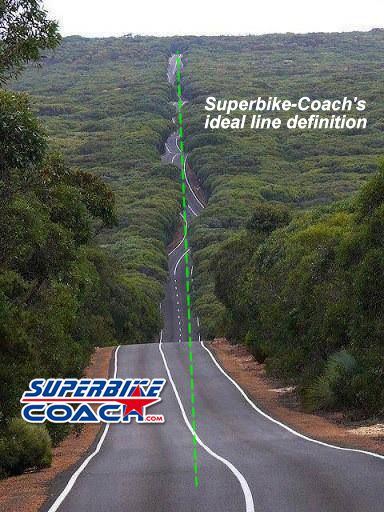
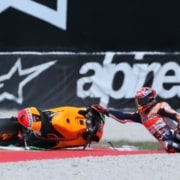



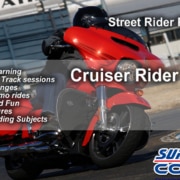
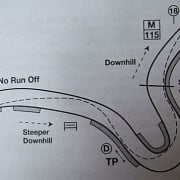


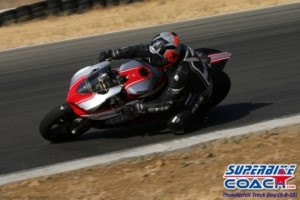





What a great article on ideal lines. Hope you come up with more stuff like this. Thanks! R.